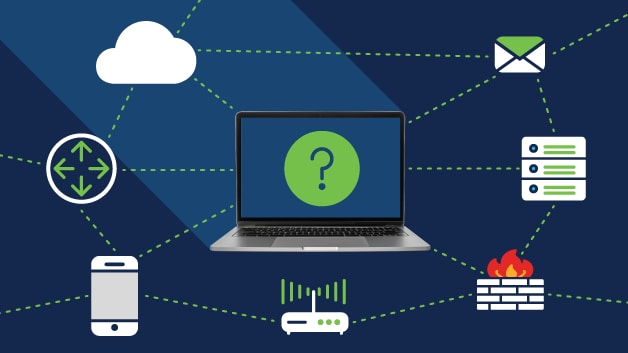Cryptography is a technique that uses mathematical algorithms to secure the confidentiality and integrity of data communication. With the advent of the digital age, cryptography has become a critical element in ensuring secure communication between individuals, organizations, and governments.
However, the security of cryptography is only as strong as the mechanisms that protect it. In this blog, we will discuss the why it is need for security in cryptography and network security to protect the data.
What is Cryptography?
The word cryptography originates from the Greek words “kryptos” and “graphia,” meaning hidden writing. Cryptography has been in use for thousands of years, with ancient civilizations using various methods to secure their communication.
In the modern era, cryptography has become increasingly complex due to the advancement of technology. The basic principle of cryptography is to convert plain text into cipher text using a mathematical algorithm. The cipher text can only be deciphered by an authorized party who has access to the decryption key.
Cryptography plays a vital role in securing communication channels such as emails, online transactions, and confidential documents. Without cryptography, it would be impossible to protect sensitive information from unauthorized access. To know more about crypto news and updates Click here.
The Need for Security in Cryptography
Cryptography is only effective if it is secure. Security in cryptography means that the communication is protected from unauthorized access, alteration, or destruction. The need for security in cryptography and network security is evident in the following scenarios:
- Protecting Confidential Information
Organizations collect and store confidential information, including financial data, customer records, and intellectual property. This information is sensitive and must be kept confidential.
Cryptography provides a secure way of transmitting and storing confidential information. However, if the cryptography is not secure, the confidential information is at risk of being accessed by unauthorized parties.
- Online Transactions
Online transactions involve the exchange of sensitive information such as credit card numbers, banking information, and personal details.
Cryptography is used to secure online transactions and prevent unauthorized access to this information. If the cryptography is not secure, online transactions are vulnerable to hacking, fraud, and other forms of cyber-attacks.
- Government Communication
Governments communicate sensitive information through secure channels to protect national security. Cryptography is used to secure government communication channels and protect against espionage and cyber-attacks.
If the cryptography is not secure, government communication channels are vulnerable to hacking, cyber espionage, and other forms of cyber-attacks.
- Protecting Intellectual Property
Companies invest heavily in research and development to create new products and services. However, intellectual property can also be protected by cryptography. If the cryptography is not secure, intellectual property is vulnerable to theft, piracy, and other forms of cyber-attacks.
- Cybersecurity
Cybersecurity is a critical concern for individuals, organizations, and governments. Cybersecurity involves protecting against cyber-attacks such as hacking, phishing, malware, and ransomware.
Cryptography is a critical element in cybersecurity as it provides secure communication channels, secure storage, and secure access control. If the cryptography is not secure, cybersecurity is compromised, and cyber-attacks can cause significant damage.
Types of Cryptography
There are two main types of cryptography: symmetric cryptography and asymmetric cryptography.
- Symmetric Cryptography
The encryption key is used to convert plain text into cipher text, and the decryption key is used to convert cipher text back into plain text. Symmetric cryptography is fast and efficient but requires that both parties have access to the same key.
- Asymmetric Cryptography
Asymmetric cryptography involves using two different keys: a public key and a private key. The public key is used to encrypt data, and the private key is used to decrypt data Asymmetric cryptography is also known as public key cryptography.
It is more secure than symmetric cryptography because the private key is never shared or transmitted. The public key can be freely distributed, allowing anyone to encrypt data, but only the owner of the private key can decrypt the data.
Challenges in Cryptography
Despite the significant advantages of cryptography, there are also several challenges that must be addressed to ensure security.
- Key Management
Key management is a critical aspect of cryptography. The secure generation, distribution, and storage of keys are essential for the security of cryptography. The use of weak keys or insecure key management can compromise the security of cryptography.
- Side-Channel Attacks
Side-channel attacks are a form of attack that exploits vulnerabilities in the implementation of cryptography rather than the cryptographic algorithm itself.
Side-channel attacks can be performed by monitoring power consumption, electromagnetic emissions, or other physical properties of a cryptographic system. Side-channel attacks are difficult to detect and prevent and can compromise the security of cryptography.
- Quantum Computing
Quantum computing is a rapidly developing technology that poses a significant threat to the security of cryptography. Quantum computers can break many of the currently used cryptographic algorithms, including RSA and ECC. The development of post-quantum cryptography is essential to address this threat.
Conclusion
Cryptography is an essential element in securing communication channels and protecting sensitive information. The need for security in cryptography is evident in protecting confidential information.
Online transactions, government communication, intellectual property, and cybersecurity. Symmetric cryptography and asymmetric cryptography are the two main types of cryptography used today.







